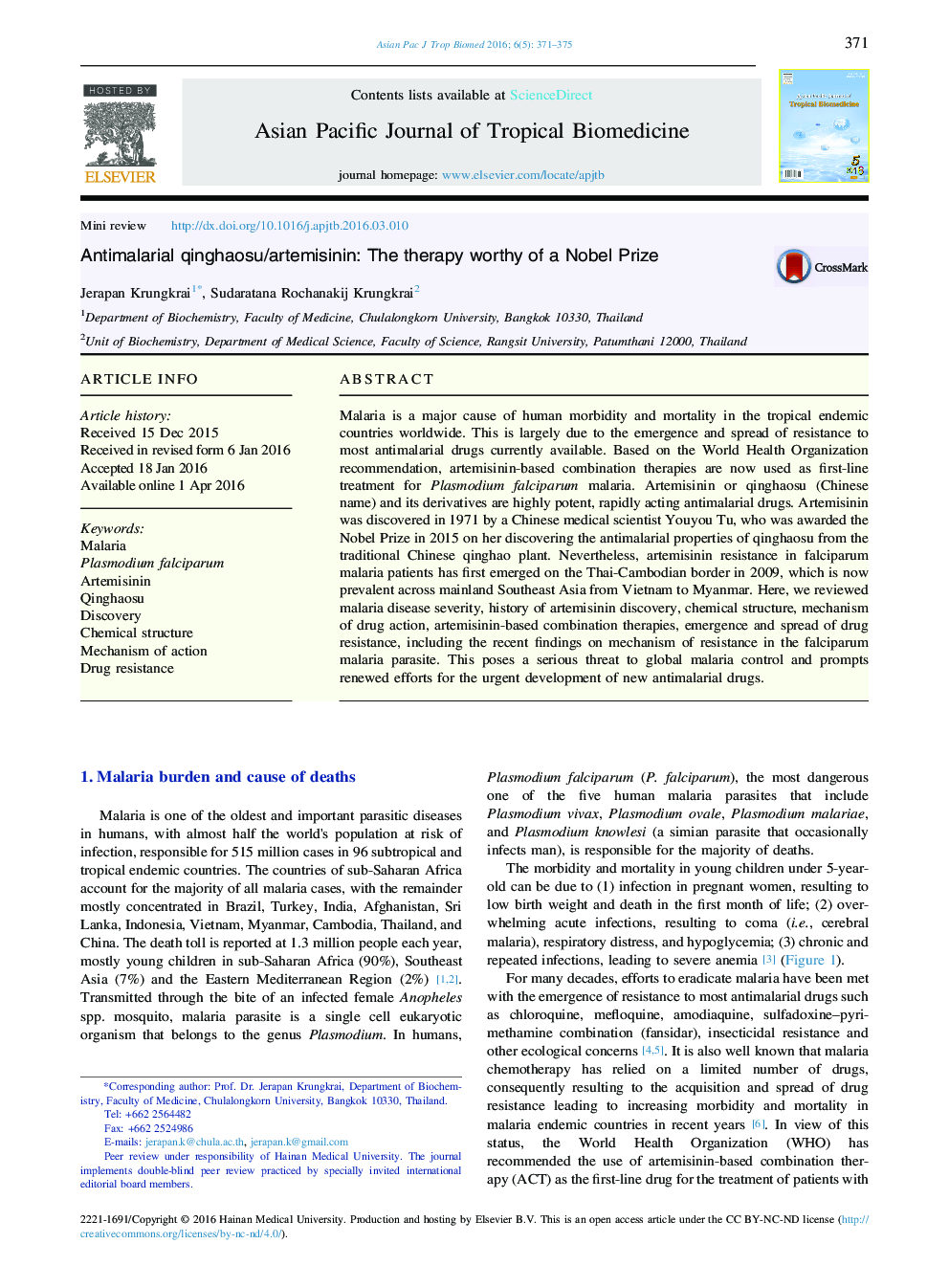| کد مقاله | کد نشریه | سال انتشار | مقاله انگلیسی | نسخه تمام متن |
|---|---|---|---|---|
| 2032524 | 1542865 | 2016 | 5 صفحه PDF | دانلود رایگان |

Malaria is a major cause of human morbidity and mortality in the tropical endemic countries worldwide. This is largely due to the emergence and spread of resistance to most antimalarial drugs currently available. Based on the World Health Organization recommendation, artemisinin-based combination therapies are now used as first-line treatment for Plasmodium falciparum malaria. Artemisinin or qinghaosu (Chinese name) and its derivatives are highly potent, rapidly acting antimalarial drugs. Artemisinin was discovered in 1971 by a Chinese medical scientist Youyou Tu, who was awarded the Nobel Prize in 2015 on her discovering the antimalarial properties of qinghaosu from the traditional Chinese qinghao plant. Nevertheless, artemisinin resistance in falciparum malaria patients has first emerged on the Thai-Cambodian border in 2009, which is now prevalent across mainland Southeast Asia from Vietnam to Myanmar. Here, we reviewed malaria disease severity, history of artemisinin discovery, chemical structure, mechanism of drug action, artemisinin-based combination therapies, emergence and spread of drug resistance, including the recent findings on mechanism of resistance in the falciparum malaria parasite. This poses a serious threat to global malaria control and prompts renewed efforts for the urgent development of new antimalarial drugs.
Journal: Asian Pacific Journal of Tropical Biomedicine - Volume 6, Issue 5, May 2016, Pages 371–375